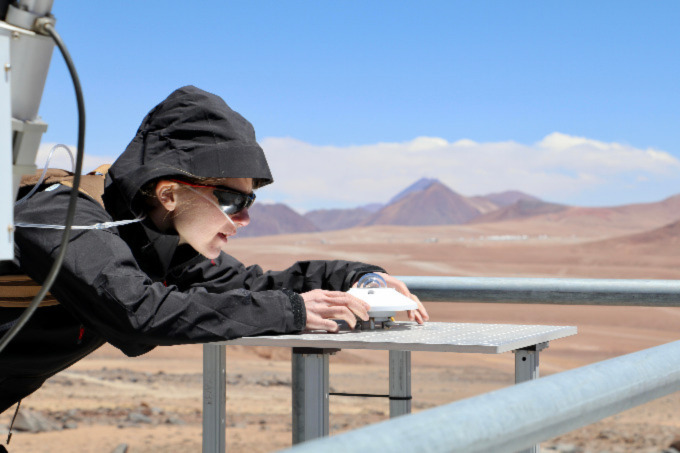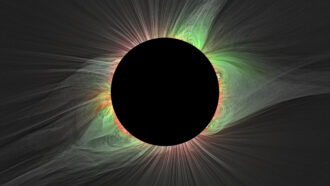average: (in science) A term for the arithmetic mean, which is the sum of a group of numbers that is then divided by the size of the group.
cloud: (in atmospheric science) A mass of airborne water droplets and ice crystals that travel as a plume, usually high in Earth’s atmosphere. Its movement is driven by winds.
observatory: (in astronomy) The building or structure (such as a satellite) that houses one or more telescopes. Or it can be a system of structures that make up a site where observational measurements are made.
physicist: A scientist who studies the nature and properties of matter and energy.
plateau: A flat area of land, high above sea level. It’s sometimes referred to as “tableland.” Several of its edges tend to be steeply sloped (cliffs).
radiation: (in physics) One of the three major ways that energy is transferred. (The other two are conduction and convection.) In radiation, electromagnetic waves carry energy from one place to another. Unlike conduction and convection, which need material to help transfer the energy, radiation can transfer energy across empty space.
satellite: A moon orbiting a planet or a vehicle or other manufactured object that orbits some celestial body in space.
solar: Having to do with the sun or the radiation it emits. It comes from sol, Latin for sun.
summit: (in geology) The uppermost part of a mountain or hill, or (verb) the act of climbing and reaching that uppermost point.
sun: The star at the center of Earth’s solar system. It is about 27,000 light-years from the center of the Milky Way galaxy. Also a term for any sunlike star.
ultraviolet: A portion of the light spectrum that is close to violet but invisible to the human eye.
Venus: The second planet out from the sun, it has a rocky core, just as Earth does. Venus lost most of its water long ago. The sun’s ultraviolet radiation broke apart those water molecules, allowing their hydrogen atoms to escape into space. Volcanoes on the planet’s surface spewed high levels of carbon dioxide, which built up in the planet’s atmosphere. Today the air pressure at the planet’s surface is 100 times greater than on Earth, and the atmosphere now keeps the surface of Venus a brutal 460° Celsius (860° Fahrenheit).
watt: A measure of the rate of energy use, flux (or flow) or production. It is equivalent to one joule per second. It describes the rate of energy converted from one form to another — or moved — per unit of time. For instance, a kilowatt is 1,000 watts, and household energy use is typically measured and quantified in terms of kilowatt-hours, or the number of kilowatts used per hour.
wavelength: The distance between one peak and the next in a series of waves, or the distance between one trough and the next. It’s also one of the “yardsticks” used to measure radiation. Visible light — which, like all electromagnetic radiation, travels in waves — includes wavelengths between about 380 nanometers (violet) and about 740 nanometers (red). Radiation with wavelengths shorter than visible light includes gamma rays, X-rays and ultraviolet light. Longer-wavelength radiation includes infrared light, microwaves and radio waves.










